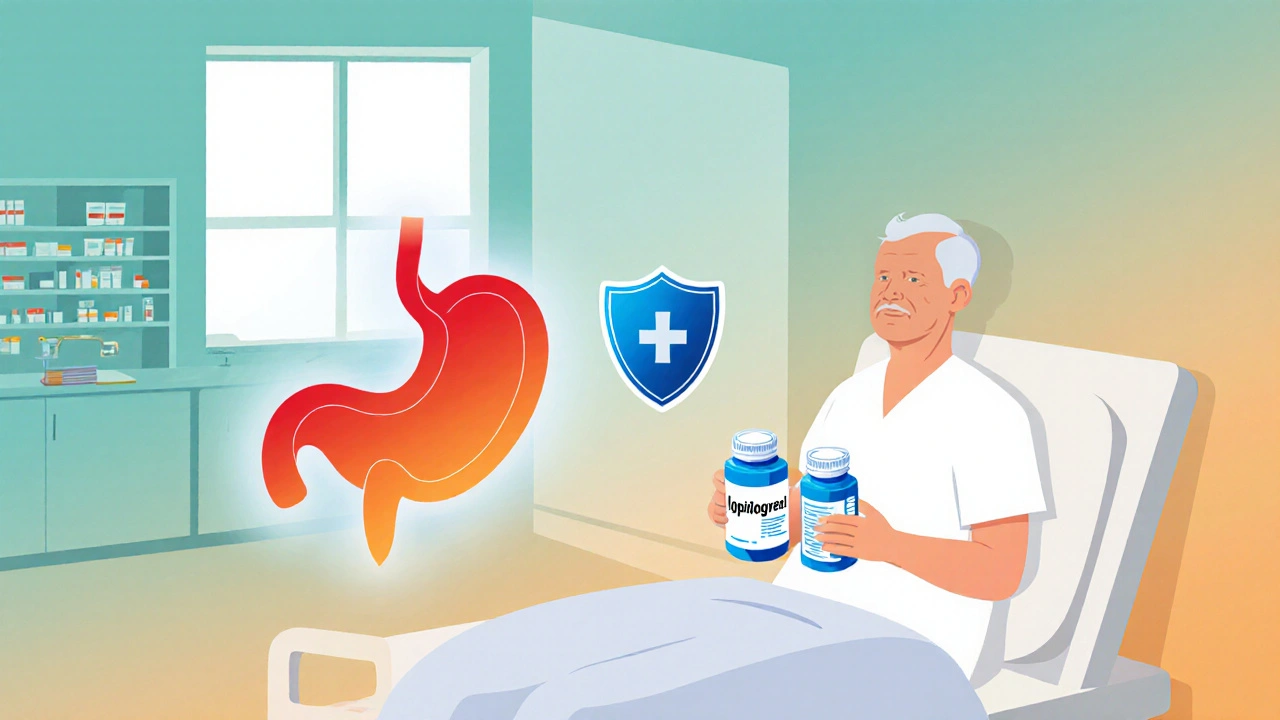Learn how adding a proton pump inhibitor to dual antiplatelet therapy reduces GI bleeding risk, which PPIs to choose, dosing guidelines, and future alternatives.
Dual Antiplatelet Therapy – Basics, Benefits, and Drug Options
When working with dual antiplatelet therapy, the practice of pairing two antiplatelet medicines to prevent clot formation after cardiovascular procedures. Also known as DAPT, it plays a critical role in treating patients with stents, acute coronary syndromes, and other high‑risk heart conditions. This approach reduces the chance of a blocked artery by targeting platelet aggregation through two distinct mechanisms.
Key Components and How They Work Together
The first component is often aspirin, an irreversible cyclooxygenase‑1 inhibitor that lowers thromboxane A2 production. By blocking this pathway, aspirin makes platelets less sticky. The second component belongs to the P2Y12 inhibitor class, such as clopidogrel, a pro‑drug that needs liver activation to block the ADP receptor on platelets or ticagrelor, a reversible, fast‑acting P2Y12 blocker that works without metabolic activation. Together, these drugs dual antiplatelet therapy provides a two‑pronged attack: aspirin reduces platelet formation of clot‑promoting chemicals, while the P2Y12 inhibitor stops platelet clumping in response to ADP signals. This combination is especially vital after coronary stent placement because stents can trigger platelet activation that leads to stent thrombosis.
Choosing the right P2Y12 inhibitor depends on several factors. Clopidogrel, offers a lower cost and a long track record, but its effectiveness can vary based on genetic differences in metabolism. Ticagrelor, delivers more consistent platelet inhibition and quicker onset, making it a preferred option for many acute coronary syndrome patients. Physicians weigh bleeding risk, patient compliance, and drug interactions when deciding which pair to prescribe.
Beyond the drug pair itself, cardiovascular disease, a broad term that includes coronary artery disease, peripheral artery disease, and stroke risk shapes the entire treatment plan. In patients with stable angina, a shorter DAPT course may be enough, while those with recent myocardial infarction often stay on therapy for a year or longer. The timing of therapy cessation is a delicate balance: stopping too early raises thrombosis risk, but extending therapy can increase bleeding complications.
Guidelines from major societies, such as the American College of Cardiology and the European Society of Cardiology, outline specific DAPT durations based on the type of stent, bleeding risk scores, and patient age. For drug‑eluting stents, a minimum of six months is common, whereas newer-generation stents may allow three months in low‑risk patients. High‑risk patients—those with diabetes, complex lesions, or prior events—often benefit from extended therapy up to 30 months, provided they can tolerate the regimen.
Real‑world practice shows that patient education is a linchpin for success. Understanding why both pills are needed, how to take them, and what side effects to watch for improves adherence. Many clinicians use tools like pill organizers and follow‑up calls to keep patients on track, especially during the critical early months after a procedure.
In the collection below, you’ll find detailed comparisons of specific drugs, guidance on dosing, safety considerations, and practical tips for both clinicians and patients. Whether you’re looking to fine‑tune your own regimen or help a loved one navigate dual antiplatelet therapy, these resources break down the science into clear, actionable advice.

